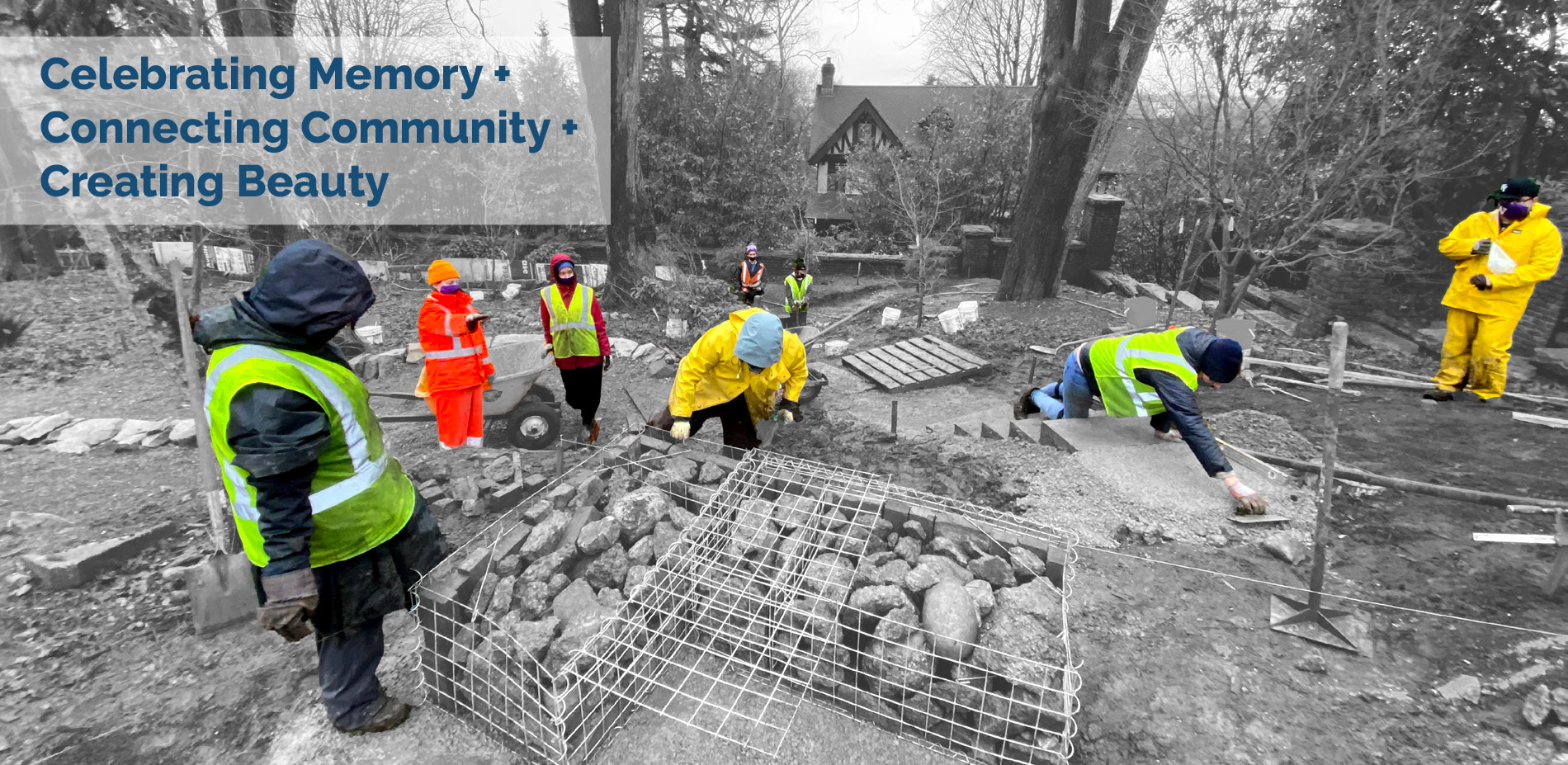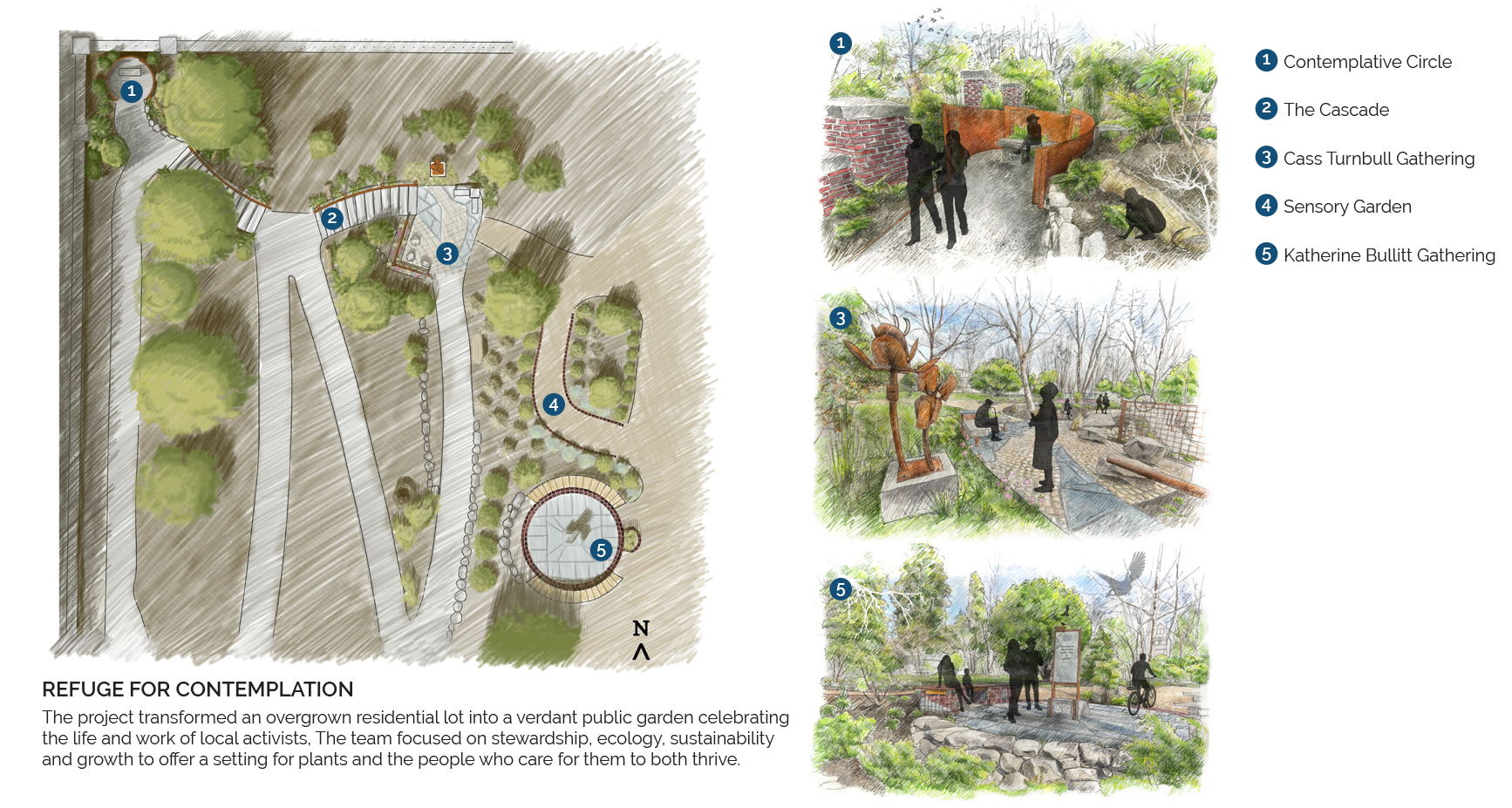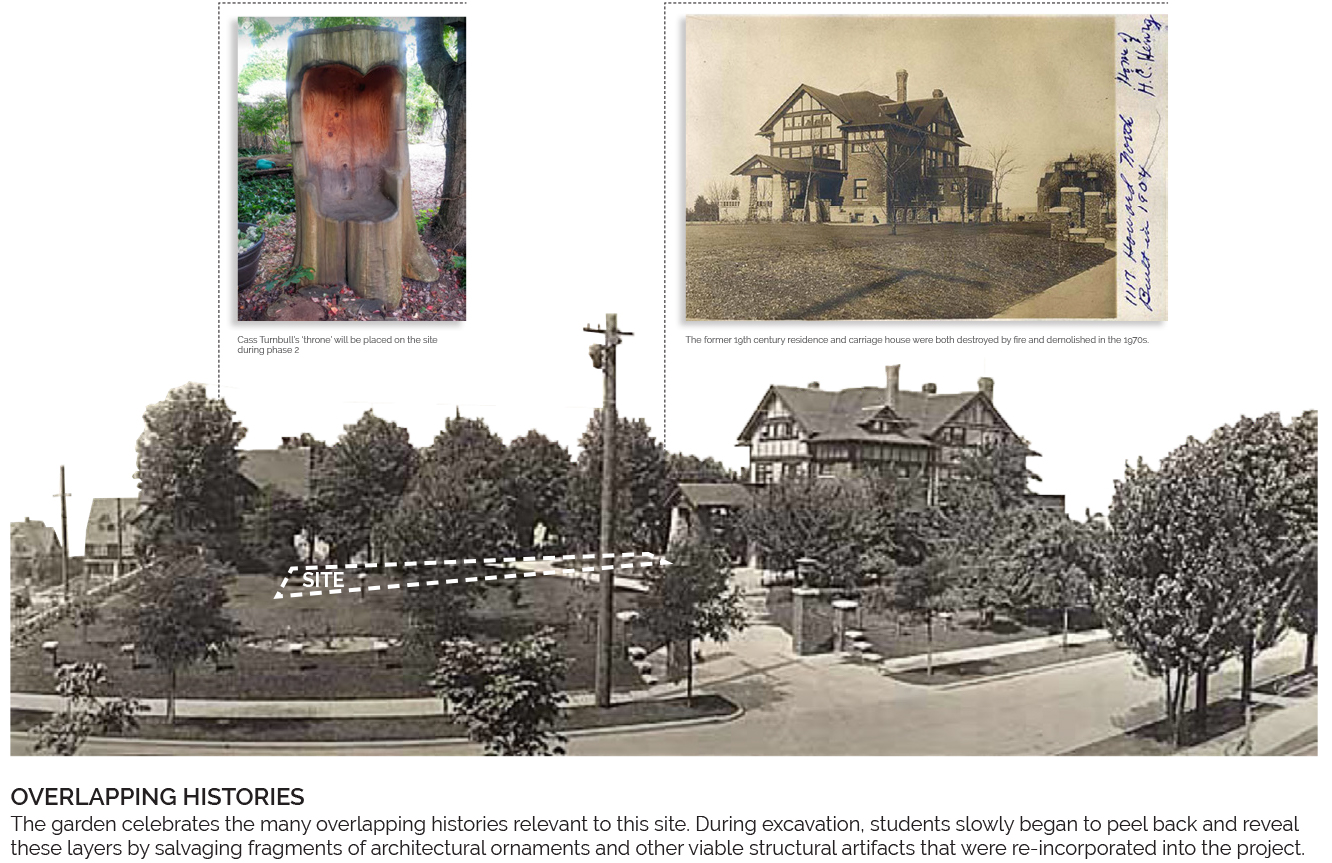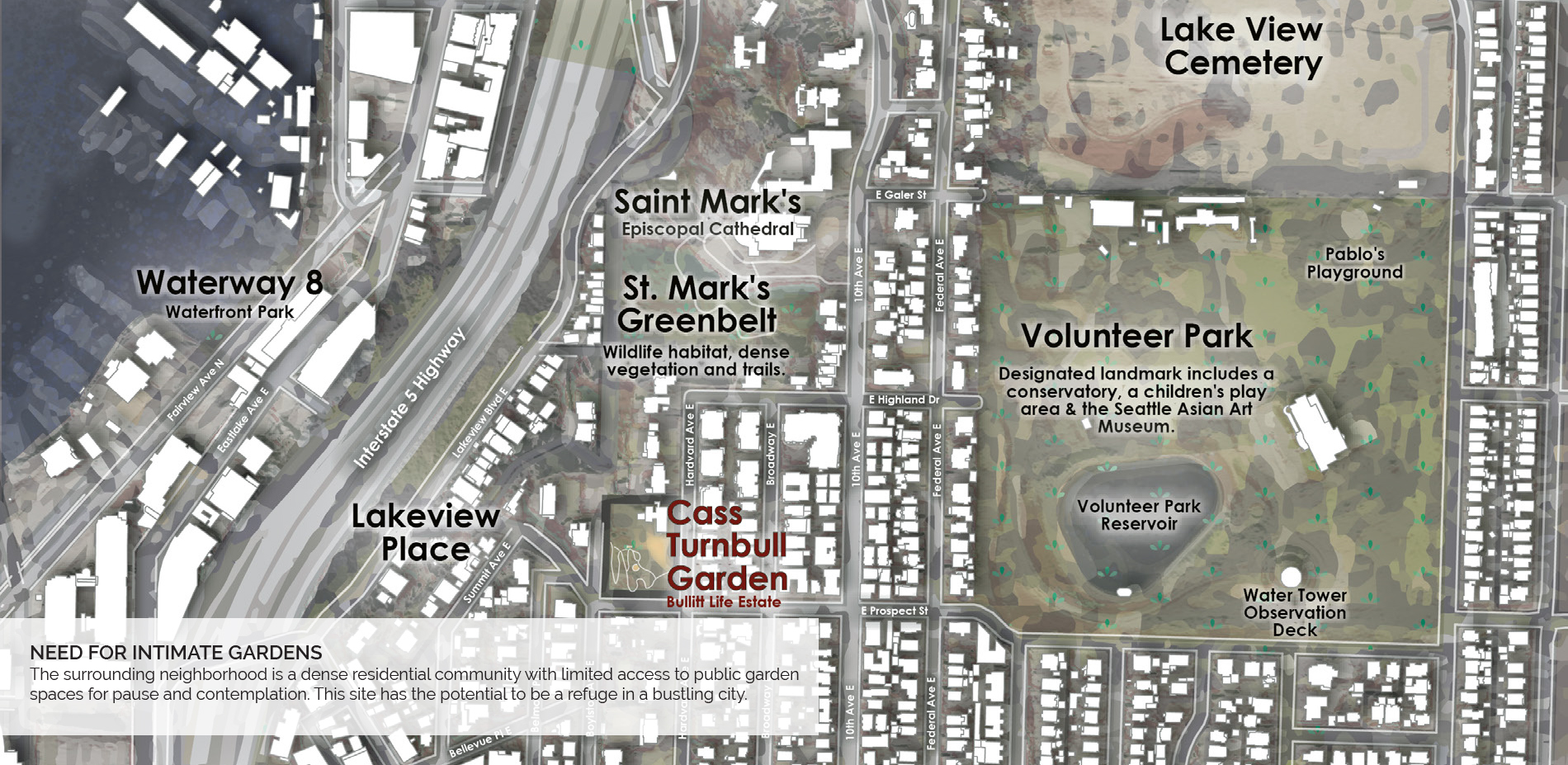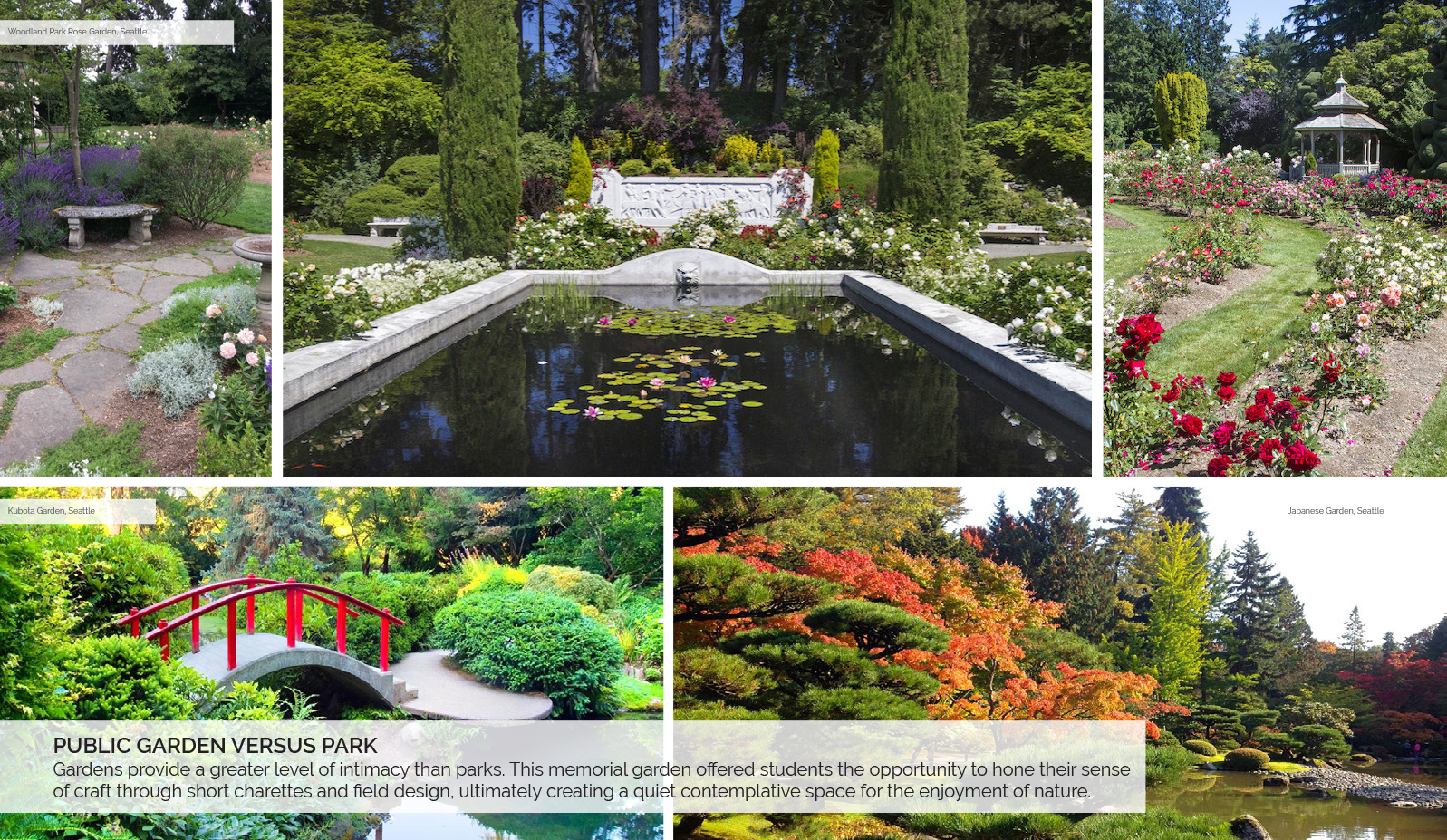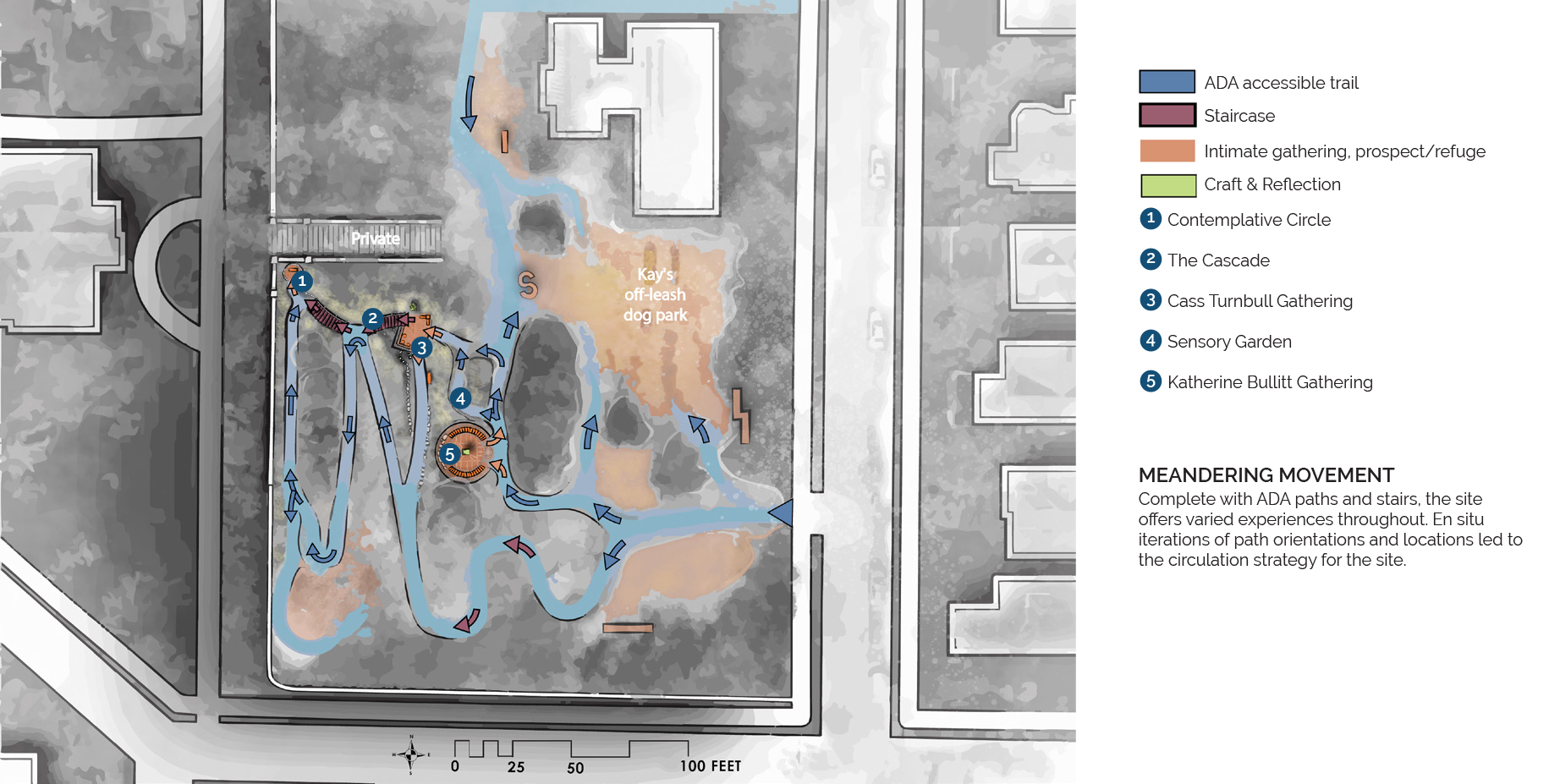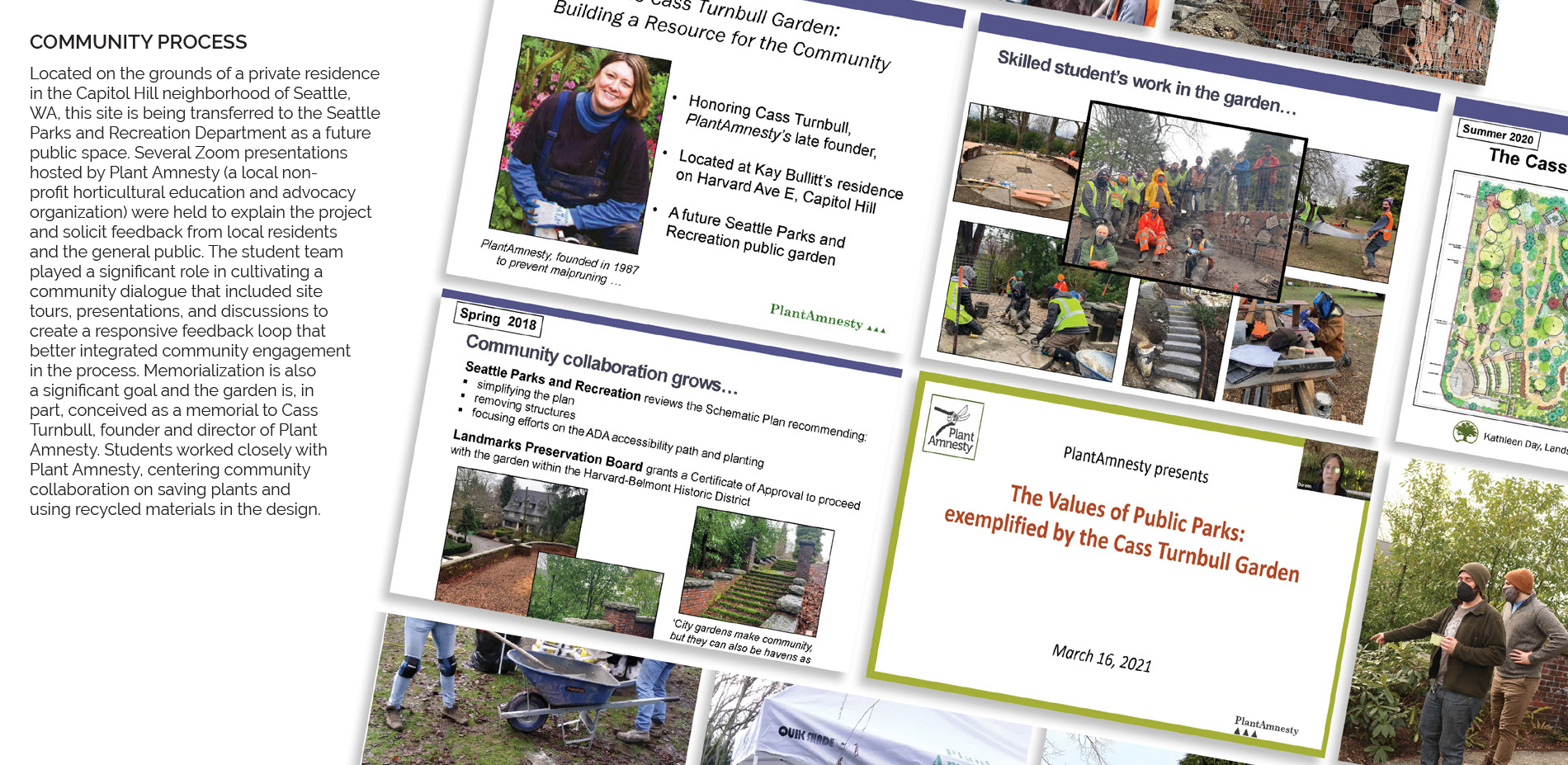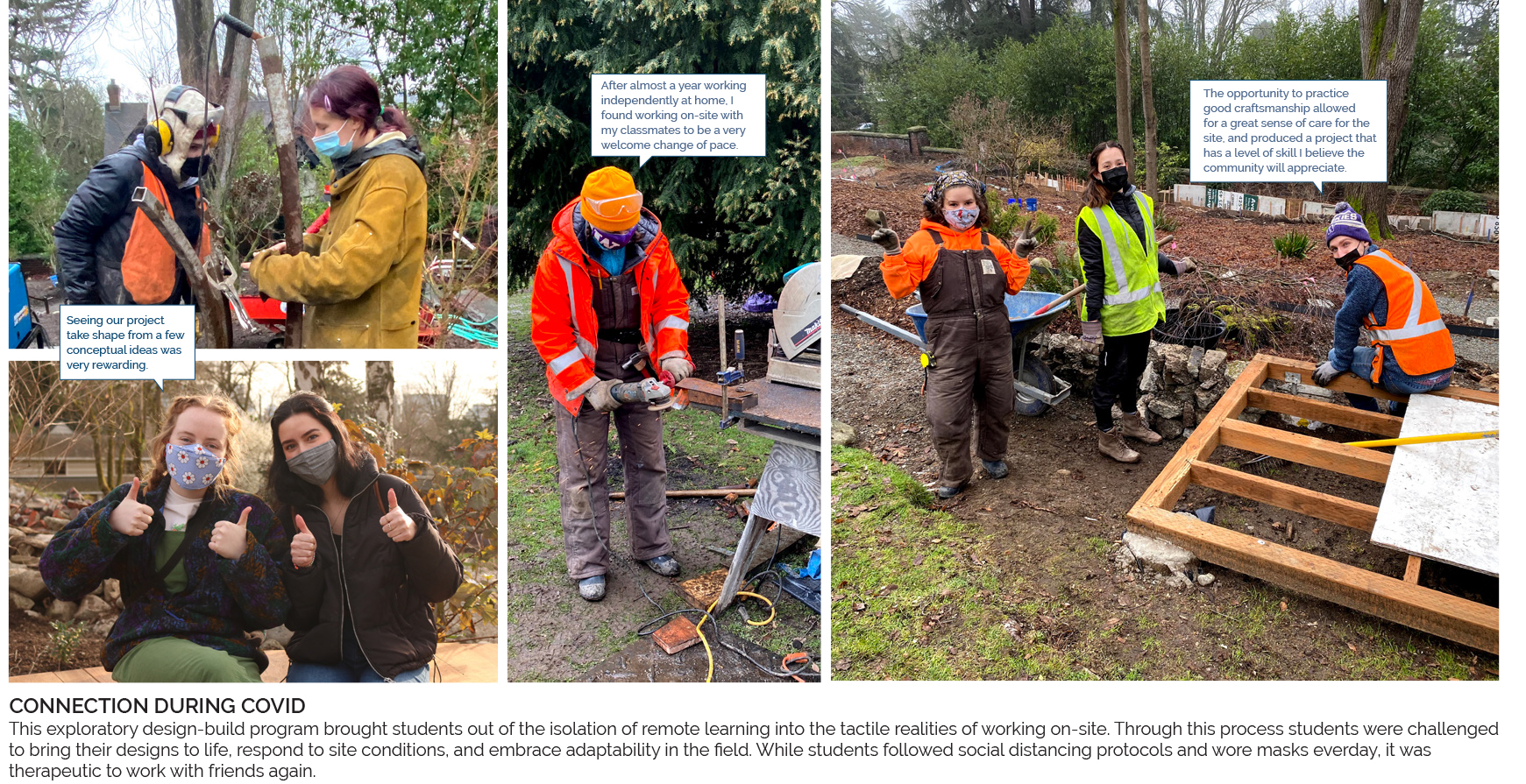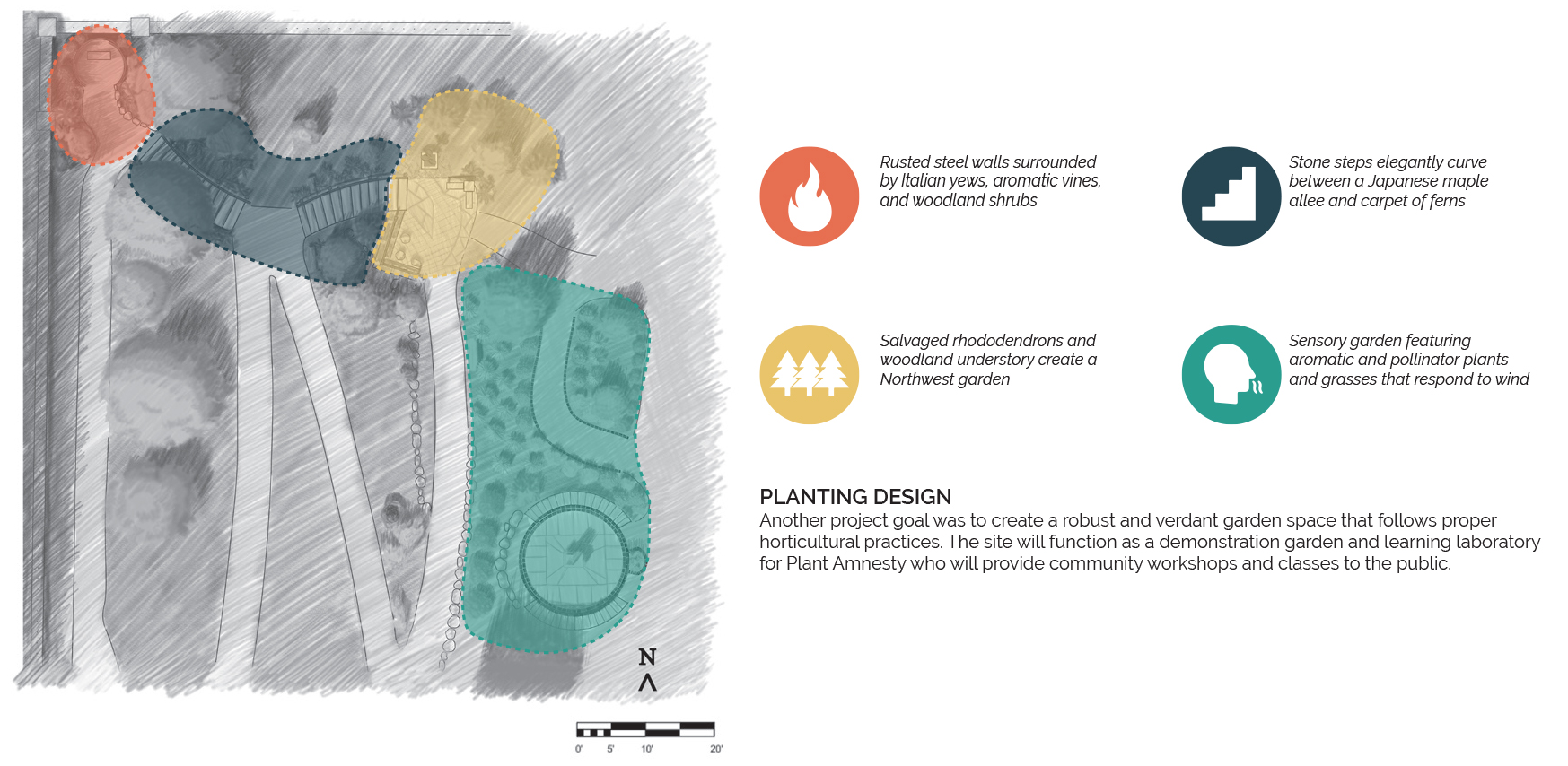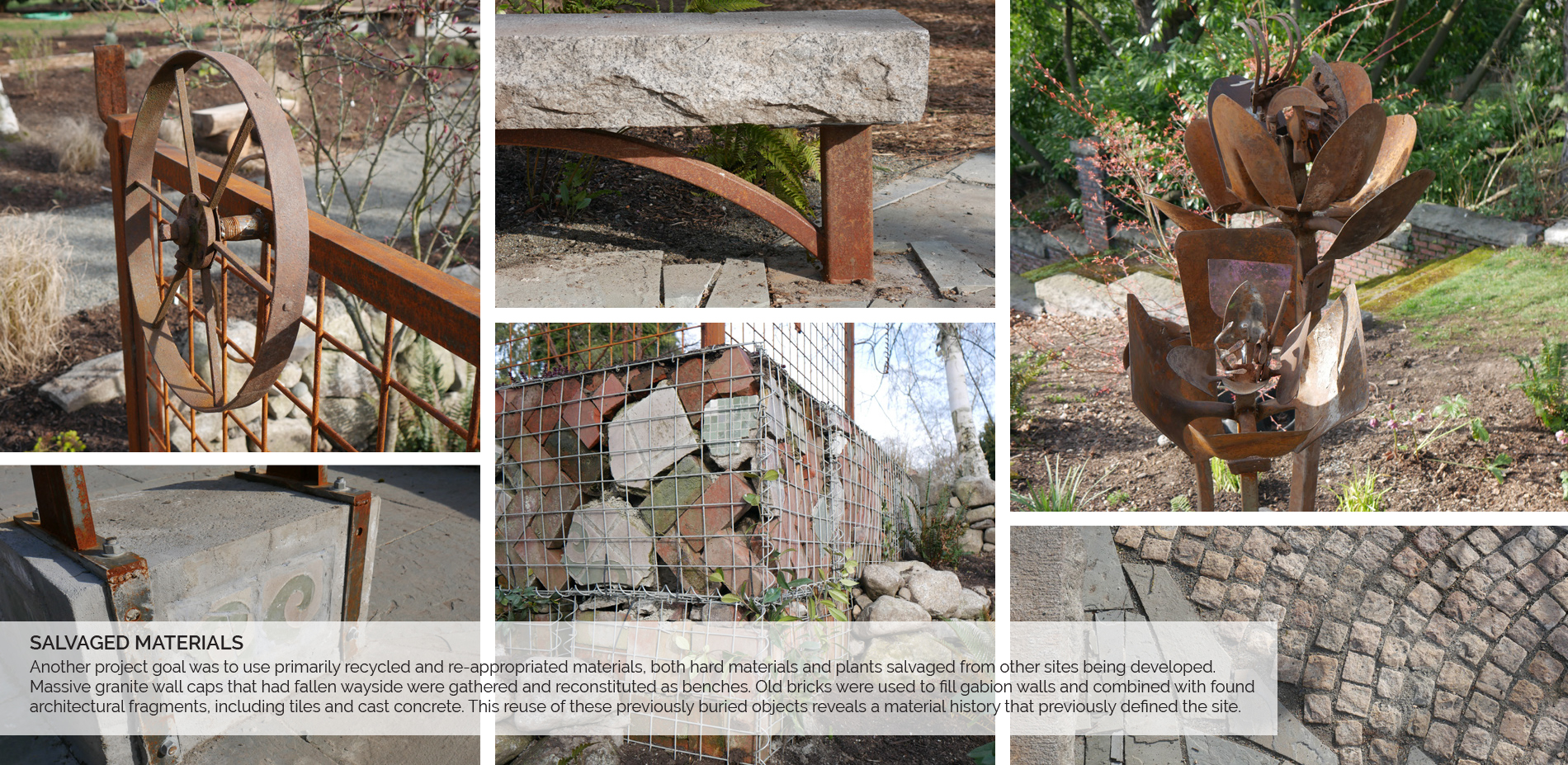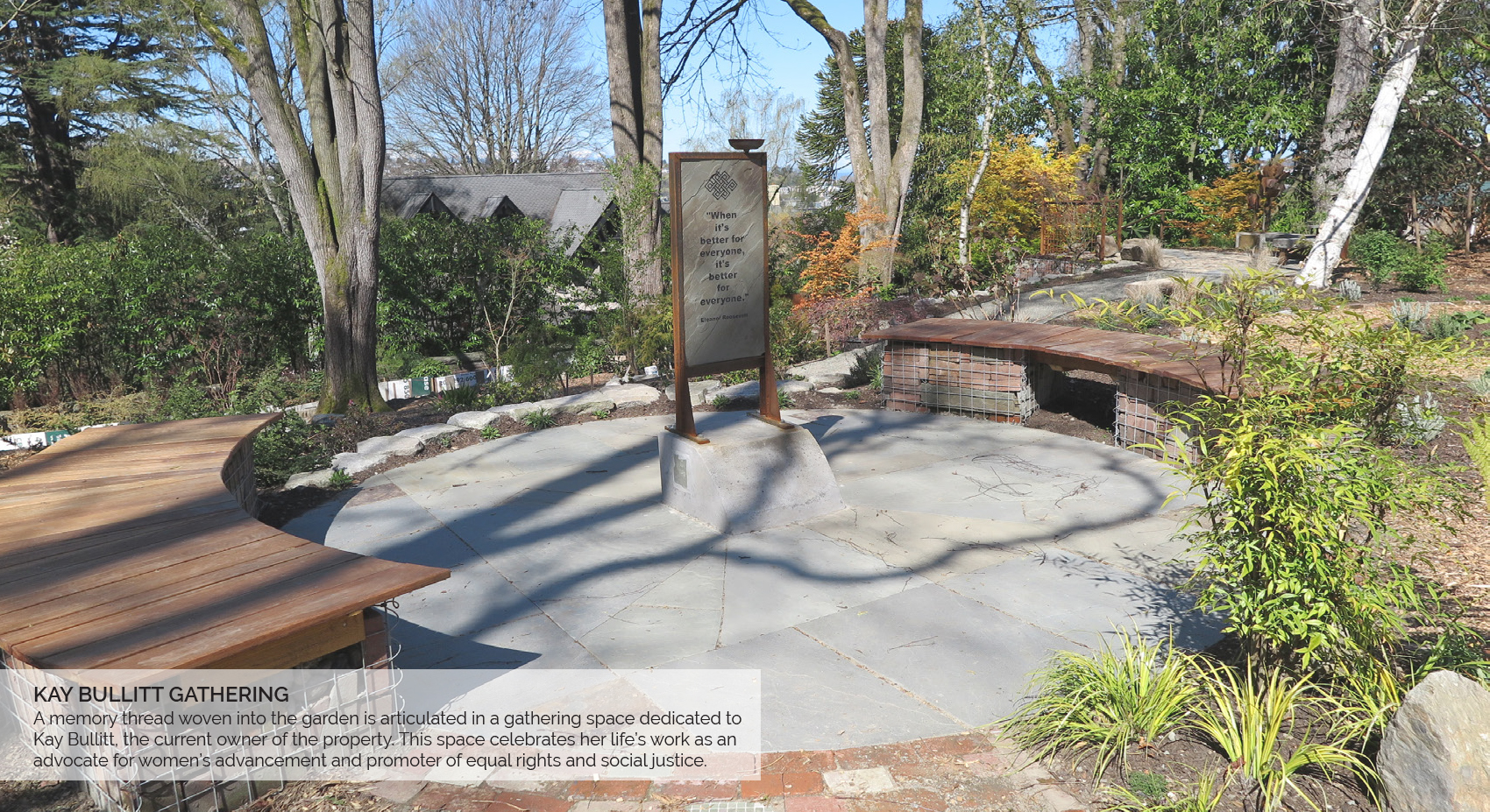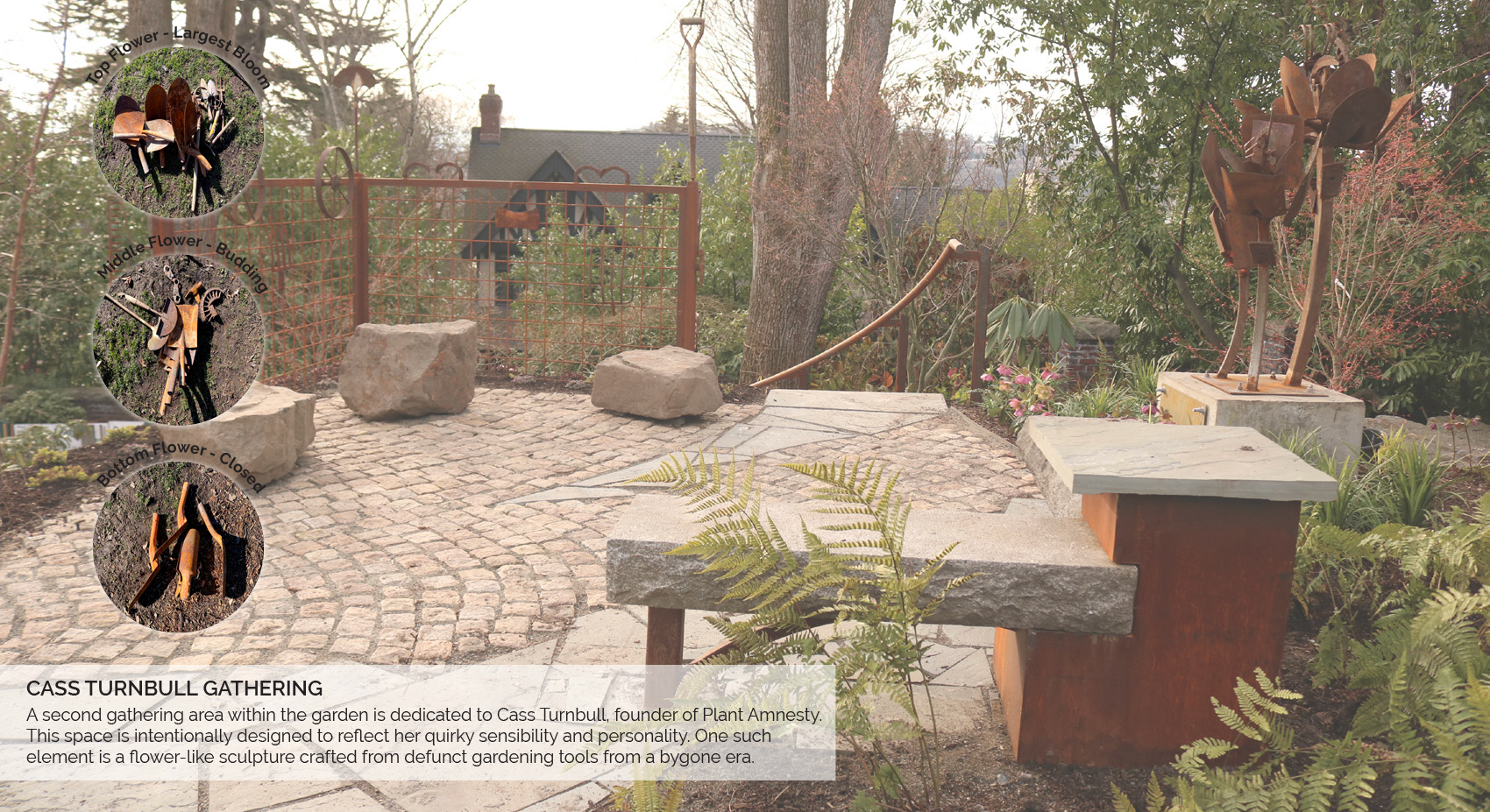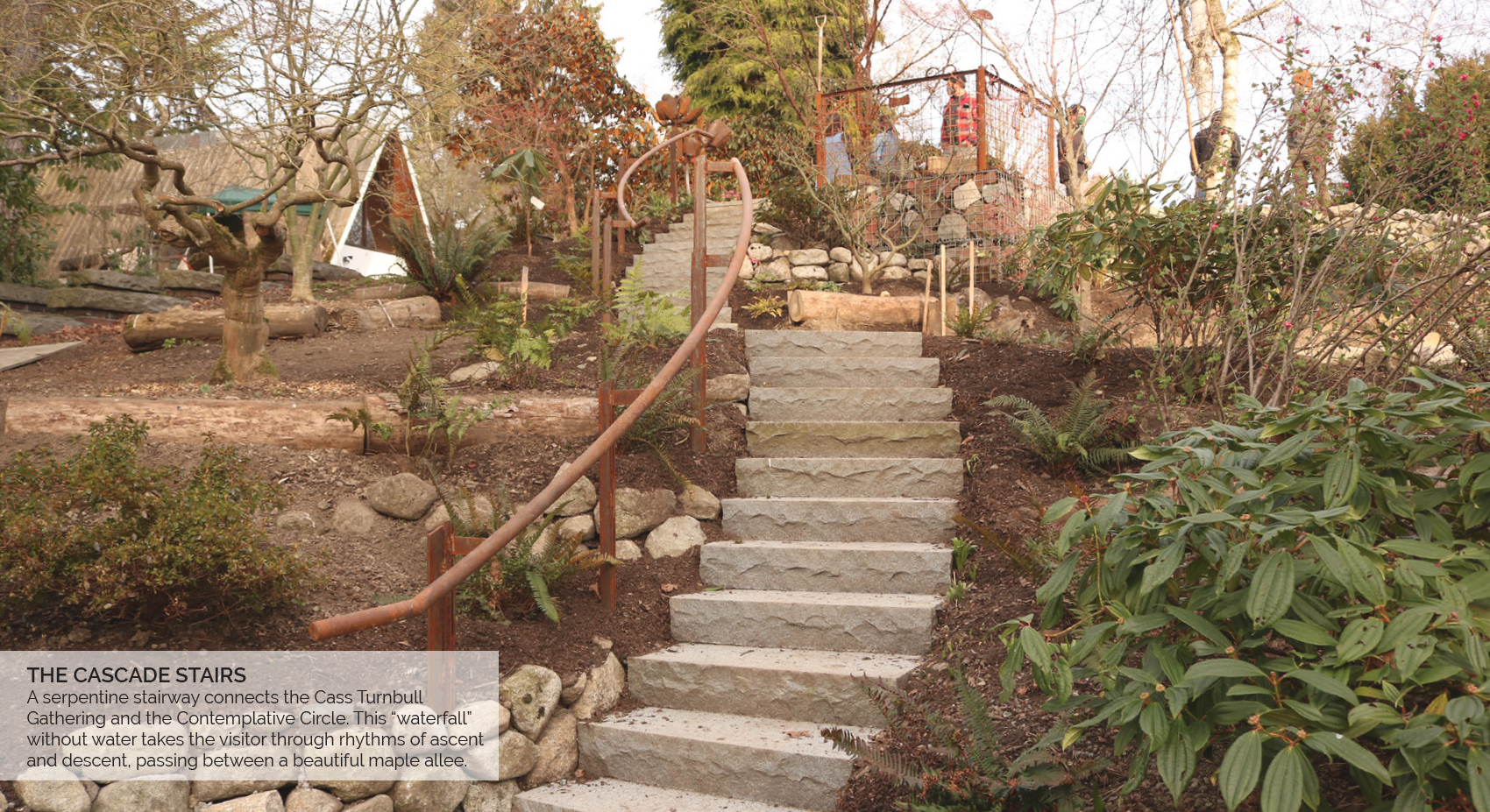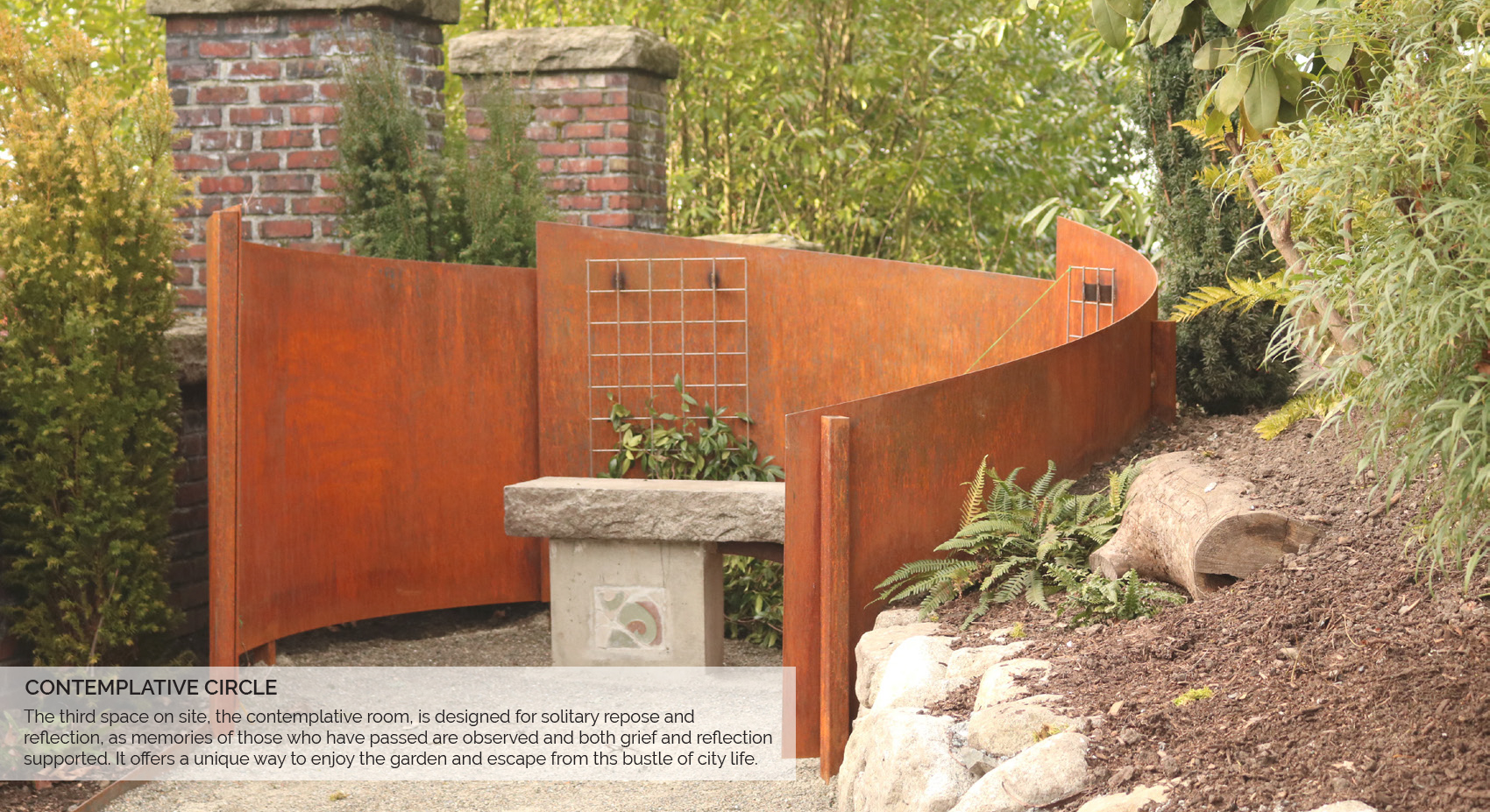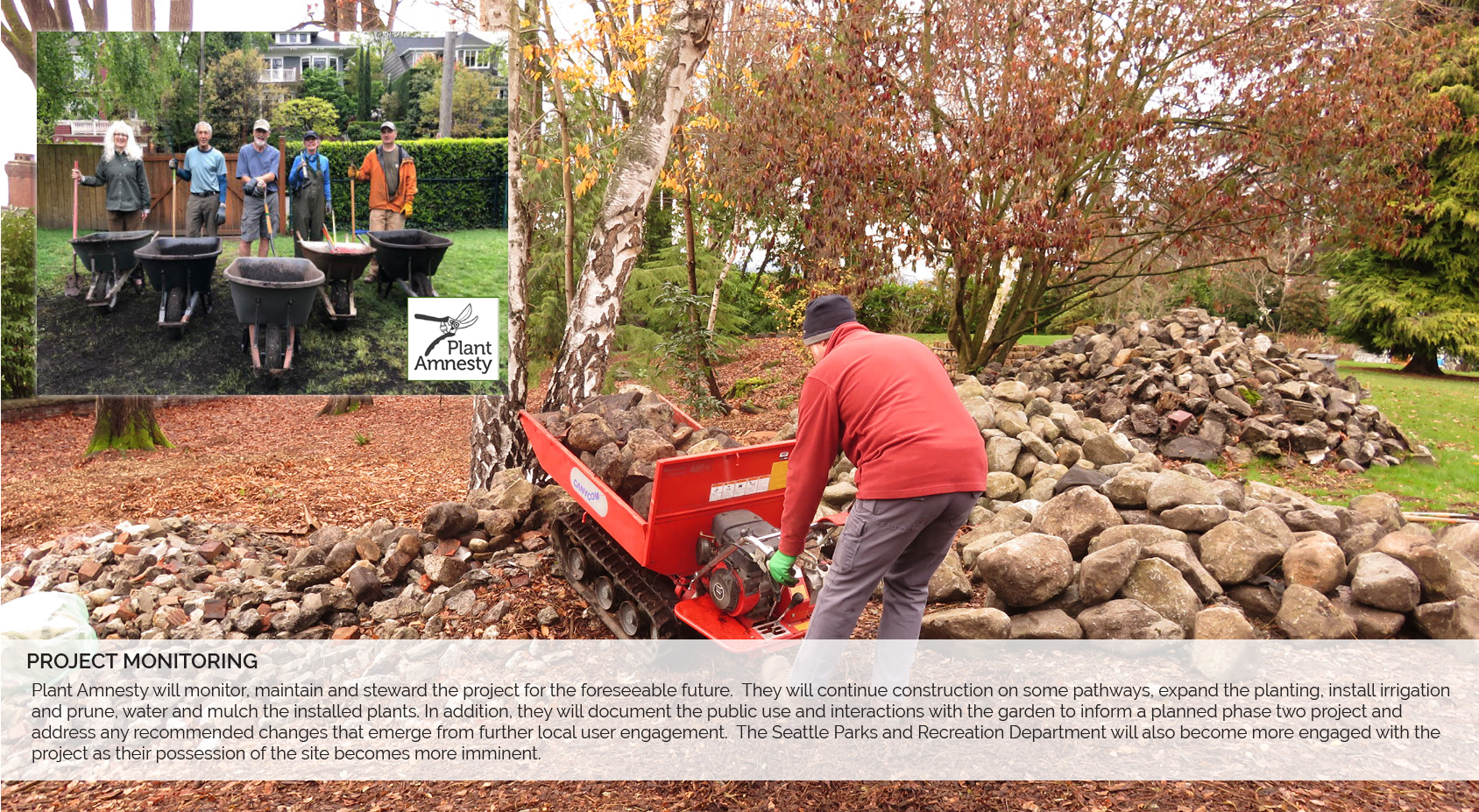Celebrating Memory + Connecting Community + Creating Beauty
Honor Award
Student Community Service Award
Capitol Hill, Seattle, Washington, United States
Adrianna Scott, Student ASLA; Kasia Cassidy; Kayla Powlesland, Student ASLA; Ky Nguyen; Laura Keil, Student ASLA; Omar Estrada, Student ASLA; Sidney Greenslate, Student ASLA; Sofia Segebre, Student ASLA; Stephanie Sells; Tyler Poland; Zach Meyers
Faculty Advisors: Daniel Winterbottom, FASLA
University of Washington
A once-private property is being converted into public space, and this project brought students together with activists to tell a beautiful story about ecology. The project speaks to the students’ attention to detail in constructing the space—particularly their use of appropriate materials and in addressing ongoing maintenance. The fact that this is a transitioning space is so interesting because it lies outside of the common box of a community that has a captive audience working on it.
- 2021 Awards Jury
Project Credits
Daniel James
Teaching Assistant
Project Statement
Behind a nondescript brick wall, an overgrown residential lot is transformed into a verdant public garden celebrating the life and work of local activists Cass Turnbull and Kay Bullitt, champions of the diverse lives of plants and people. Over 10 weeks, this exploratory design-build program brought students out of the isolation of remote learning into the tactile realities of working on-site. Through this process students were challenged to bring their designs to life, respond to site conditions, and embrace adaptability in the field. By emphasizing the reuse of materials and plants, both found and donated, students were able to create unique site features such as rock walls, seating areas, and staircases that together reflect a focus on craft and an expressionist approach to the site. The garden acts not only as a refuge for contemplation in the city but also as a living laboratory for Plant Amnesty, a local volunteer-run non-profit. Together, this focus on stewardship, ecology, sustainability and growth offers a setting for plants and the people who care for them to both thrive.
Project Narrative
Goals and Objectives: Located on the grounds of a private residence in the Capitol Hill neighborhood of Seattle, WA, this site is being transferred to the Seattle Parks and Recreation Department as a future public space in one of the city’s densest parts of the city. One goal was to use primarily recycled and re-appropriated materials, both hard materials and plants salvaged from other sites being developed. A second goal was to celebrate the many overlapping histories relevant to this site. During excavation, we slowly began to peel back and reveal these layers by salvaging fragments of architectural ornament and other viable structural artifacts that were re-incorporated into the project. The former 19th century residence and carriage house were both destroyed by fire and demolished in the 1970s. In the process of clearing invasive plants from the site, we were able to recover architectural elements of these former structures and implement them into newly constructed garden elements. Massive granite wall caps that had fallen wayside were gathered and reconstituted as benches. Old bricks were used to fill gabion walls and combined with found architectural fragments, including tiles and cast concrete. This reuse of these previously buried objects reveals a material history that previously defined the site.
Memorialization is also a significant goal and the garden is, in part conceived as a memorial to Cass Turnbull, founder, and director of Plant Amnesty, a local non-profit horticultural education and advocacy organization. Turnbull, a former Parks and Recreation employee, devoted her life to teaching clients, city officials, and the public about the importance of preserving and fostering the health of urban tree canopy through proper pruning and maintenance techniques. After passing away three years ago, we worked with Plant Amnesty on a garden space that would celebrate her and her lasting influence on Seattle’s landscape architecture and horticultural communities. The first of three gathering areas within the garden is dedicated to her and intentionally designed to reflect her quirky sensibility and personality. One such element is a flower-like sculpture crafted from defunct gardening tools from a bygone era. These leftover tools also serve as distinctive decorative elements to the nearby guard rail that frames the overlook in this section of the garden while also expressing her love of gardening. A third memory thread woven into the garden is articulated in another gathering space dedicated to Kay Bullitt, the current owner of the property. This space celebrates her life’s work as an advocate for women’s advancement and promoter of equal rights and social justice. The semi-circular gabion benches, reminiscent of gathering places of exchange found in Quaker meeting houses, direct the user’s focus onto a central stone feature with carved quotes from Elenore Roosevelt and Professor Cornel West expressing Kay’s values and life goals.
Another project goal was to create a robust and verdant garden space that follows proper horticultural practices. The site will function as a demonstration garden and learning laboratory for Plant Amnesty who will provide community workshops and classes to the public. This once formal garden had fallen into neglect and had since been overtaken by many invasive and ruderal species like Himalayan Blackberry and English Ivy. Plant Amnesty, a community volunteer organization cleared the site and asked if our exploratory building program would partner with them and the Seattle Parks and Recreation Department to develop the garden. An initial master plan was created by students at Edmonds Community College and this plan was refined by our program and the project implemented in the winter of 2021. To increase biological diversity, learning opportunities and seasonal variety in each gathering area are associated with a specific planting typology. The Kay Bullitt space is defined by a sensory garden that features aromatic and pollinator plants, and grasses that respond to the wind, offering a calming, restorative benefit for the local community. The Cass Turnbull space is planted with large salvaged rhododendrons and underplanted with hellebores, ferns, carpets of snowdrops, and Solomon Seal. These were some of Cass’s favorite plants and express her love of perennials and plants typically found in Northwest gardens. A connecting stairway links the upper Turnbull gathering area to a contemplative space below. The alignment of the stone treads elegantly curves between an assortment of mature, salvaged Japanese maples amidst a carpet of ferns and other ground covers that thrive in dappled shade. The third space, the contemplative room, is designed for solitary repose and reflection, as memories of those who have passed are observed and both grief and reflection supported. This space is flanked with columnar Italian yews, aromatic vines, and woodland shrubs, that create a feeling of fertility, enclosure, refuge, and rebirth. This garden, full of textural and visual interest, complements the learning objectives of Plant Amnesty to provide a deeper environmental understanding and a place where future students can practice proper pruning and horticultural practices, understand the principles of good plant stewardship, appreciate the site’s embedded history and pay homage to Cass and Kay.
Community Process: Much of our process was gaining an understanding of Katherine Bullitt and Cass Turnbull, both of whom are memorialized in the garden. Interviews with those who knew them were conducted to understand their preferences, personalities, and aspirations. Several Zoom presentations hosted by Plant Amnesty were held to explain the project and solicit feedback from local nearby residents and the general public. These have been critical to the success of the project as the earlier concept development and site preparation had limited public input. To address this lack of inclusion, the student team plays a significant role in cultivating a community dialogue that included site tours, presentations, and discussions to create a responsive feedback loop that will better integrate community engagement in the process. The students reduced the hostility that had grown and have garnered much community support for the project that had previously not existed.
Project Implementation: This project implementation utilized an exploratory building studio course in partnership with Plant Amnesty volunteers. The project was designed to incorporate materials salvaged including recycled bricks, concrete rubble, stone sets, donated old garden tools and granite wall caps, and architectural “shards” extracted from the site. Students designed the seating, walls, stairs, pathways, and plantings on the site, refining in the field using the exploratory process and mocking up the designs with the materials on site. With such a varied array of site features, each student was able to experience a myriad of contemporary construction techniques such as welding, steel fabrication, stone setting, concrete forming and finishing, carpentry, and plant installation. Most of the students had little or no construction experience before the start of the project. Local equipment operators donated time and equipment for excavation, but 95% of the work was done by the students by hand.
Project monitoring: Plant Amnesty will monitor, maintain and steward the project for the foreseeable future. They will continue construction on some pathways, expand the planting, install irrigation and prune, water and mulch the installed plants. In addition, they will document the public use and interactions with the garden to inform a planned phase two project and address any recommended changes that emerge from further local user engagement. The Seattle Parks and Recreation Department will also become more engaged with the project as their possession of the site becomes more imminent.
Plant List:
- Witch Hazel
- Contorted Filbert
- Box Leaf Azara
- Sweet Box
- Dwarf Rockrose
- Rosemary
- Anouk Lavender
- Turkish Sage
- Violet Blue Sage
- Oregano
- Dwarf Lambs Ear
- Sea Holly
- Blue Oat Grass
- Late Blooming Fountain Grass
- Bears Breeches
- Anemone x hybrida
- Fastiga English Yew
- Climbing Hydrangea
- English Lavender
- Fountain Grass
- Dwarf Russian Sage
- Stonecrop
- Japanese Forest Grass
- Pink Coneflower
- Autumn Fern
- Red Creeping Thyme
- Oakleaf Hydrangea
- Mock-orange
- Snowberry
- Wild Ginger
- Makino rhododendron
- Chinese mahonia
- February daphne
- Chilean guava
- Soloman seal
- Hart's tongue fern
- Asian saber fern
- Japanese holly fern
